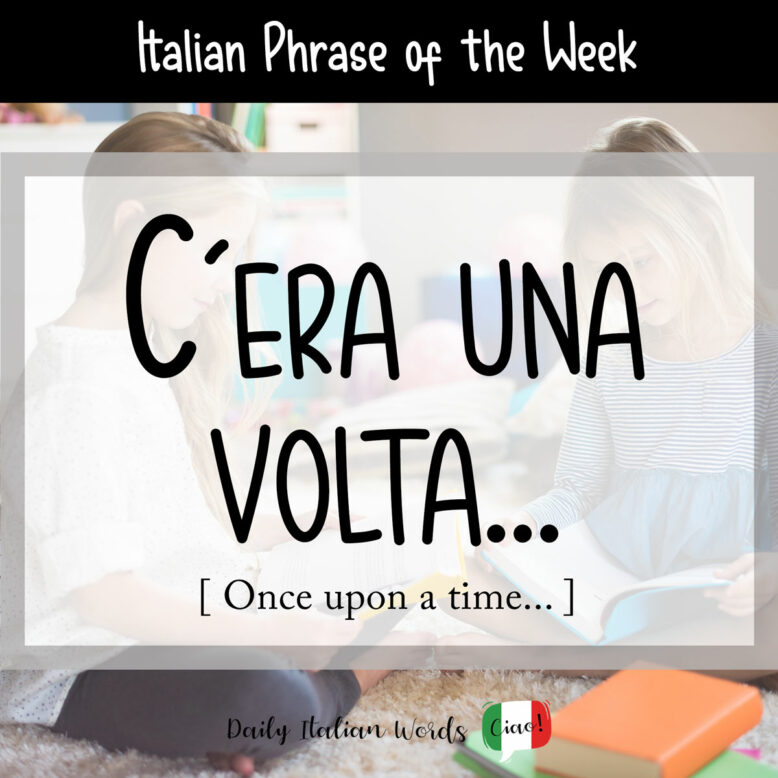C’era una volta… (literally ‘there was a time‘) is a stock phrase in Italian used as an opening line to introduce a narrative of past events, typically in fairy tales for children. It is the equivalent of Once upon a time… in English.

Let’s take a look at how this phrase breaks down into its component parts:
- C’era is how you would say there was in Italian. It is a contraction of ci (there) and era (was). Other related forms include c’è (there is), ci sono (there are), and c’erano (there were).
- Una is the feminine indefinite article meaning a. You can also find it with the apostrophe, replacing the “a” (un’) when it precedes a noun beginning with a vowel. The masculine equivalents are un and uno.
- Volta is the word for time, occasion or turn.
C’era una volta un castello dove vivevano un re e una regina.
Once upon a time there was a castle where a king and queen lived.

Most fairy tales that begin with this line also end with the classic phrase E vissero felici e contenti which literally translates as And they lived happy and content. It is the equivalent of the English And they all lived happily ever after.
Did you know that…?
C’era una volta (known as More than a Miracle in English) is the name of a 1967 film directed by Francesco Rosi starring Sophia Loren, Omar Sharif and Dolores del Río. It recounts the story in fairy tale format of a beautiful village girl Isabella and an ill-tempered Spanish prince, Rodrigo.
Other famous movie titles with the phrase are C’era una volta il west (Once upon a time in the west) and C’era una volta in America (Once upon a time in America), both directed by Sergio Leone.
Heather Broster is a graduate with honours in linguistics from the University of Western Ontario. She is an aspiring polyglot, proficient in English and Italian, as well as Japanese, Welsh, and French to varying degrees of fluency. Originally from Toronto, Heather has resided in various countries, notably Italy for a period of six years. Her primary focus lies in the fields of language acquisition, education, and bilingual instruction.


